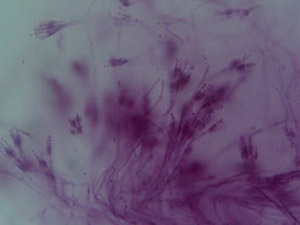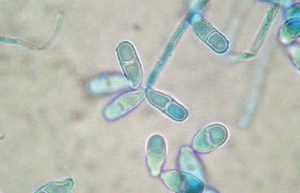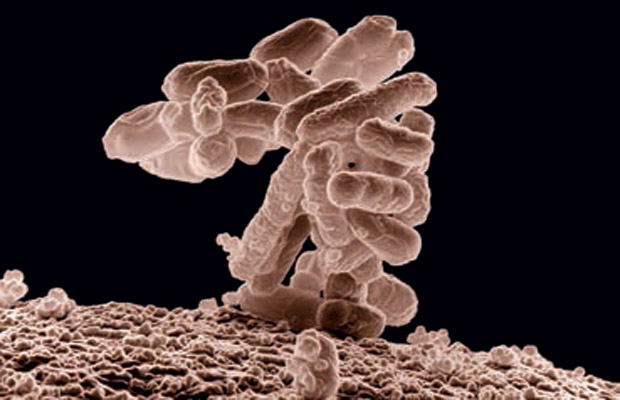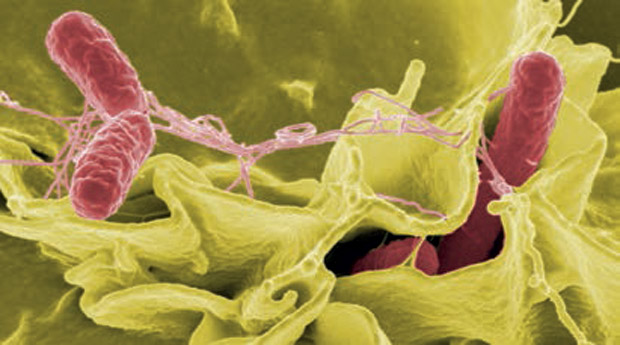Cannabis must be free of waste products and pollutants which might pose a short or long term health risk. Plants can be exposed to several types of chemical and microbiological pollutants during the whole production process, which last from cultivation till packaging. This needs to be avoided.

Chemical pollutants. Heavy metals
Some heavy metals that can be found in vegetables, and particularly in Cannabis, are lead, cadmium, mercury and chromium. These metals accumulate in parts of the body, and are not easily eliminated. When certain levels of these toxins are reached, metabolic imbalances are triggered, leading to poisoning. Lead poisoning is called saturnism and is characterised by the accumulation or this metal in the blood, soft tissues and bones, causing certain physiological disorders and even death.
Not every plant can tolerate being grown with high levels of these pollutants. However, the Cannabis plant is quite resistant to their influence. This feature, together with the fact that it is fast growing, has lead to the study of Cannabis for phytoremediation. Phytoremediation consists in growing plants in polluted soil so that they will absorb the heavy metals and other pollutants, ending up with soil decontamination. The subsequent treatment of these plants allows for the controlled elimination of pollutants. It can be also used as raw material to manufacture certain products not intended for human consumption. The capacity Cannabis has for absorbing radioactive caesium has also been demonstrated.
The accumulation of these metals in plants is due to the cultivation in contaminated soil.
Non-metal chemical pollutants: Arsenic, nitrates and nitrites

Penicillium. Image courtesy of Peter Halasz
Water contamination with arsenic is much more common than we believe. In fact, there are several areas in Spain that have water contaminated with arsenic. The most recent case has taken place in Galicia, where gold mining caused waters to be contaminated with arsenic. Gold in these mines is part of arsenopyrite, which is pulverised and cleaned to isolate the precious metal. Arsenic consumption is related to skin cancer and other ailments. Plants naturally absorb arsenic and store it in their tissues. This is the reason why it is necessary to avoid using wells or groundwater when it is not known if this element will be present in them. Soil could also be contaminated with arsenic.
Nitrites are one way for nitrogen to be present in plants. Crops demand a certain amount of nitrogen for optimum growing. When we add fertiliser with organic nitrogen, this is transformed in the soil into ammonium, nitrites and nitrates, in a process known as nitrification. Much of the nitrogen applied to our plants is absorbed as nitrates, although large amounts of ammonium and nitrites can also be absorbed.
When nitrates access our body, some of them can change into nitrites. The combination of nitrite with certain organic amine can produce substances with great carcinogenic potential, known as nitrosamines.
Biological toxins

Pink Mildew. Image courtesy
of Truman State University
Toxins of biological origin can be found within chemical organic pollutants. These are produced by microorganisms (fungi and bacteria). Some bacteria have such toxins in their cellular membrane and are known as endotoxins.
When speaking about fungi these toxins are referred to as mycotoxines and, generally, are substances segregated by these organisms.
Pesticide residues
Cannabis for consumption should not contain pesticide residues. There is the belief that observing the security time frame marked in the pesticide's packaging should be enough to avoid residues in the plant. This is not always necessarily true.
There is always a list of authorised crops in the packaging of chemical pesticides, which specifies those which the pesticide can be used on. The reason why it cannot be applied to other cultivations is the maximum limit of residues. Depending of the plant species treated with the pesticide, the final product will show different amounts of residues.
There are no studies that indicate the amount of remaining residues after having applied a certain pesticide. Therefore, there is no way of knowing how much residue we ingest. The security time frame detailed on the label does not apply to Cannabis as it only applies to the products listed on the label.
Biological pollutants
Biological pollutants are those microorganisms (bacteria, fungi and yeasts) that can be found in the final product.
During cultivation, plants can develop several plant pathogens, mainly fungi. However, although these fungi only attack plant species and are not normally human pathogens, they can cause severe allergic reactions. There is a disease known as cannabinosis that is specific to those who work with hemp fibre and are constantly inhaling the particles suspended in the air. The main symptom is a serious respiratory failure. Some researches point to the microorganisms that can be found in such particles as the ones responsible for cannabinosis. Some plant pathogens produce toxins, as happens with Trichothecium roseum also known as pink mildew. A final product destined to be consumed, should contain the minimum amount of these plant pathogens.
In EEUU, a study was carried out to show what type of microorganisms could be found in the environment of indoor Cannabis crops. The results showed that there were up to 100 times more spores of fungi of Penicillium genus in indoor crop environments than in outdoor ones. These fungi are mainly found in soil and substrata, however, their spores can be easily released into the environment. Although some of these fungi are use to make cheese, some others produce toxins that can cause serious health problems. Nonetheless, it was discovered that the handling of the crops for the manicure, drying, etc. caused such release of spores that could reach up to 500,000 spores per m2. The research of the study recommends using masks during the handling of the crop as such a high concentration of spores can cause allergic reactions and hypersensitivity to workers [1].

Escherichia coli
Polluting microorganisms
Escherichia coli. is a bacterium mainly found in animal intestines and excretions. Even though there are a huge number of strains which are not pathogenic, there are many others which can cause severe diseases and diarrhoea. There are also strains that produce toxins.
The fact that these strains are found in animal excretions means that it can also be found in the resulting manure, compost and fertilisers made from them. Therefore, a way of contaminating the plant is by using these type of fertilisers. It could be because the plant comes into contact with it or because, when we cut it, we place the plant in soil previously treated with contaminated manure, compost or fertilisers.
The contact with excretions coming from domestic animals such as dogs, cats and mice can also lead to contamination.
Genus Salmonella. Similarly to E. coli, they are enterobacteria found in animal excretions. There are several strains which cause serious diseases in humans. There have been cases of poisoning due to Salmonella through contaminated Cannabis, as happened in EEUU, in 1981, when 85 cases of enteritis provoked by Salmonella were registered. 71% of people in these cases had been in contact with Cannabis, where analysis showed positive for Salmonella munchen. [2]
Both E. coli and Salmonella are bacteria which have to reach the digestive tract in order to cause the infection. Thus, in the cases of ingestion of Cannabis, the risk is immediate. To those who consume Cannabis by inhalation, the main risk lies in the handling of it, i.e when the plant material is shredded to make a cigarette. In this case, the fingers are contaminated with the bacterium, so if we touch our mouth or any food afterwards, without having cleaned our hands first, there will be a high risk of infection.

Salmonella
Genus Aspergillus. These are some of the most dangerous kinds of fungi to be found. This is not just because of their capacity to grow inside the organism, but also because of the production of high power carcinogenic mycotoxins, known as aflatoxins. It is a fungus that can be found everywhere and its spores are constantly inhaled by people. In general, this is not a problem, however, when it comes to sensitive people, or people with certain pathologies that cause a weakening of the immune system, it can be the reason for a disease known as aspergillosis. This disease consists in fungus growing in the lungs and the subsequent reaction of the body covering it with cells. This produces a mass called aspergilloma, which will affect the organs.
Cases of aspergillosis in Cannabis users have been reported, as the spores are easily inhaled with each inhalation. This fungus mainly affects Cannabis grown in conditions with a high level of humidity, or Cannabis that has been stored in an environment of high humidity and heat.


